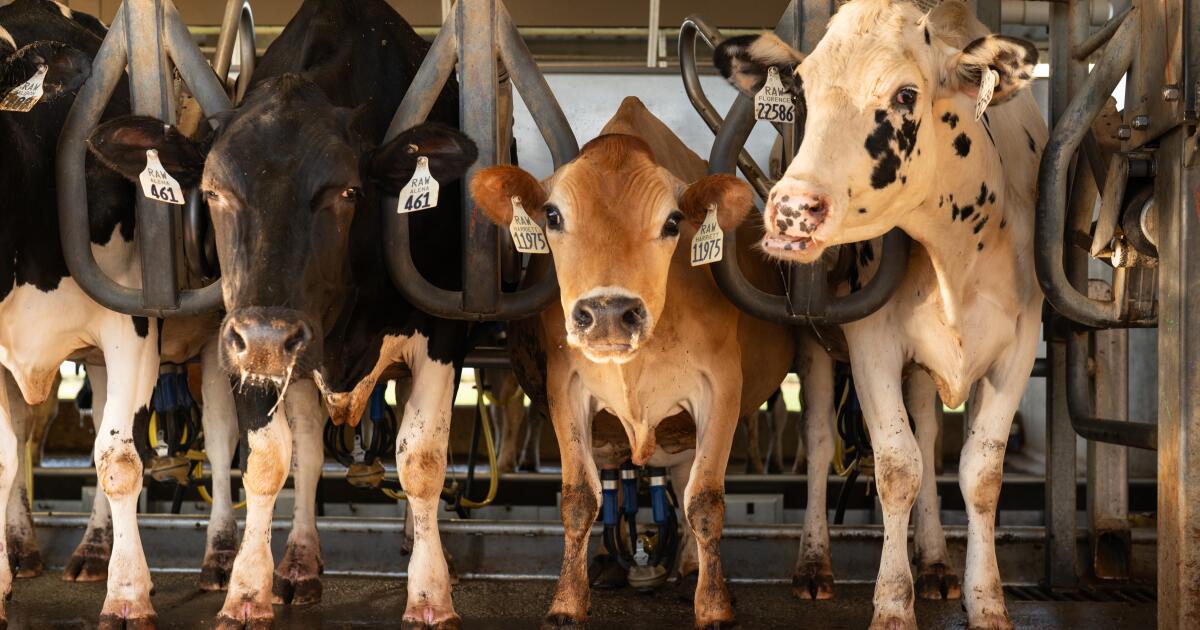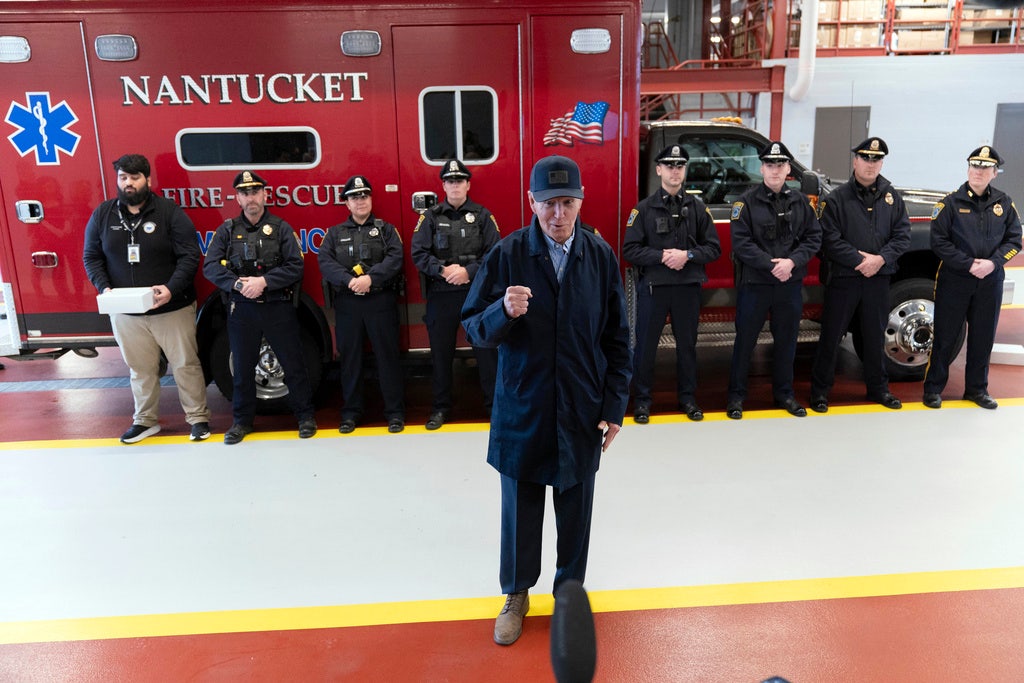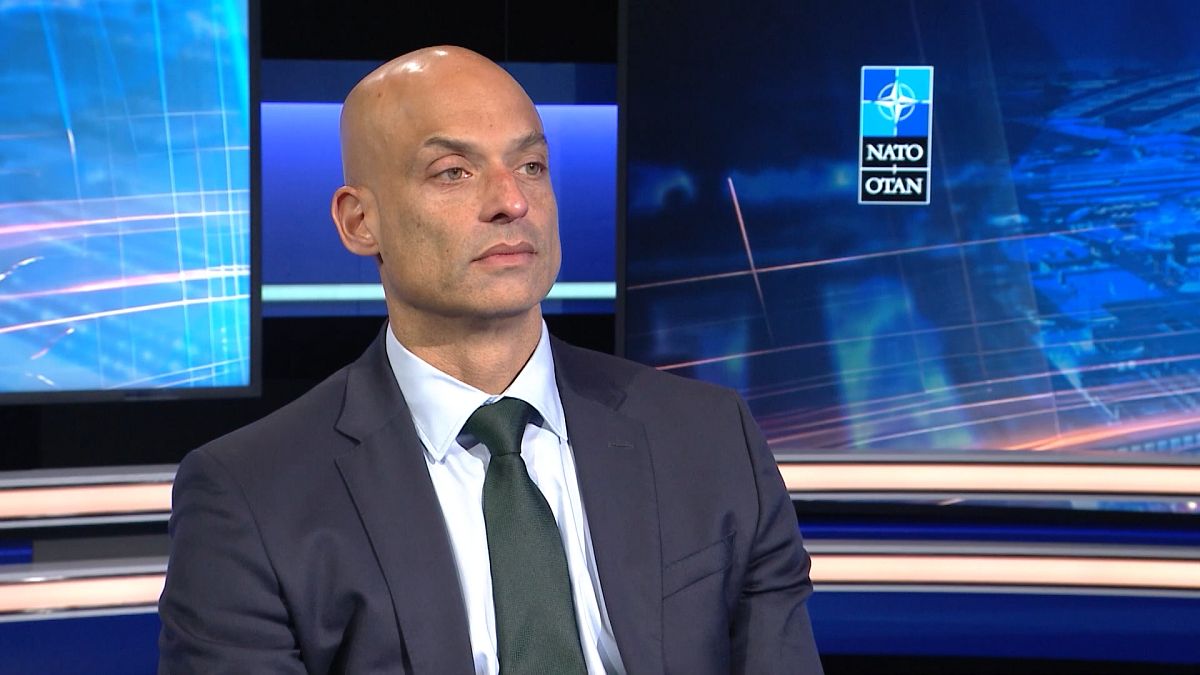California
His job: Build the largest new reservoir in California in 50 years

California is no stranger to severe droughts. Eleven of the past 17 years have been in drought, with urban water shortages, barren farm fields, and a lack of water for fish and wildlife — the most recent ending just last winter when soaking rains finally returned.
As the state has struggled, and climate change has made droughts more severe, an increasing number of residents and political leaders have asked “Why don’t we build more dams to increase the water supply?”
A few have been built. Contra Costa Water District constructed Los Vaqueros Reservoir in 1998 and expanded it in 2012. Metropolitan Water District of Southern California built Diamond Valley Lake in Riverside County in 1999. San Diego County Water Authority raised the height of its San Vicente Dam by 117 feet in 2012.
But there have been no enormous new reservoirs built, like Shasta, Oroville and others were in the 1940s, 50s and 60s. Experts cite many reasons. Most of the best spots are already taken. President Reagan changed the rules in the 1980s so that the federal government no longer pays 100% of the costs. Environmental laws passed in the 1970s — from the Endangered Species Act to the Clean Water Act — limit where and how projects can be built, and give opponents powerful tools to block them. Other sources of water, like recharging underground aquifers, recycling wastewater, and paying homeowners to voluntarily remove their lawns are often cheaper and less controversial. And when California voters passed Proposition 13 in 1978, they made it more difficult to raise taxes to fund projects like new dams.
Jerry Brown is working to overcome those odds. Brown, a civil engineer who isn’t related to the former governor with the same name, is executive director of The Sites Project Authority, a group of government agencies in the Sacramento Valley that is planning to build the largest new reservoir in California since 1979, when the federal government built New Melones Lake in the Sierra Foothills west of Yosemite National Park.
Sites Reservoir would be a $4.5 billion project, located in rural Colusa County, about 70 miles northeast of Sacramento. Plans call for it to be a vast off-stream reservoir that would take water from the Sacramento River in wet years, and store it for cities and farms in dry years. The 1.5 million-acre-foot reservoir would be California’s eighth largest, providing water to 24 million people and 500,000 acres of Central Valley farmlands.
The project is opposed by the Sierra Club, Friends of the River and other environmental groups. It is supported by Gov. Gavin Newsom, farm organizations, labor unions and water districts, including the Santa Clara Valley Water District in San Jose, and the Metropolitan Water District in Los Angeles, both of which would receive some of the water.
On Nov. 17, the Sites Project Authority certified the final environmental impact report and approved the project. Brown says the group hopes to break ground in 2026.
This conversation has been condensed and edited for clarity and length.
Q: Why is this project needed?
A: Last winter was very wet. We estimate we would have been able to put about 700,000 acre feet of water (a one-year supply for about 3.5 million people) into Sites had it been built. We know the next drought is coming. We’ve just come out of a big drought. We definitely see the need to capture water when it’s wet, and store it and serve it when it is dry. That’s exactly what is necessary to make our system more resilient and our water supply more secure for the future.
Q: What about critics who say this project would deprive the Sacramento-San Joaquin River Delta and San Francisco Bay of fresh water?
A: When you look at the amount of water that Sites would be permitted to divert during high flow periods — which is the only time diversion would be permitted — the amount that is being diverted is a very small share of the total.
We’ve reached a point in our development as a society where we make tradeoffs. And we have to make a tradeoff here. Where we may be losing something from that water making it all the way to the ocean, we are gaining far more by storing that water for dry years when all of us, including the environment, need it more.
Q: Of the $4.5 billon cost for Sites, you have $875 million committed in state money from Proposition 1, a $2.2 billion loan from the Biden administration, and about $244 million in federal funding from the bipartisan Infrastructure Law. I’m assuming most of the rest of the money would come from water rates from the agencies that partner with you?
A: Yes. We are also expecting to see more appropriation from the federal side. They have indicated they want to get up to about $750 million. We are on track and in a good position for securing all the financing and moving forward.
Q: What is the biggest hurdle remaining?
A: Obtaining the water right from the State Water Resources Control Board. That’s the biggest remaining issue in my view. That doesn’t mean everything else is easy, or a piece of cake. But that one is probably the linchpin for this project actually getting done or not. We anticipate that getting done by the end of next year.
Q: How long before you break ground and get it built?
A: Assuming we have a water right by the end of next year, we will be ready to hire a contractor and break ground by early 2026. We need 2025 to get all of the water districts, and the state and federal governments, to make their final commitments to the funding and sign agreements. We have 22 water agencies that are participating and 15 on a waiting list. Our board just adopted a construction schedule that puts completion at the end of 2032.
Q: This project has been talked about for more than 60 years. What is the likelihood it will finally be built?
A: We’ve got a strong tailwind at our back right now, which is nice to see. It’s rewarding for those who have been involved in this for so long. We still have a long way to go, but we do see the light at the end of the tunnel, and we see the path to get there.
_________________________________________________________________________________
Jerry Brown
Age: 60
Position: Executive director, Sites Project Authority
Hometown: Salina, Kansas
Residence: Pleasanton
Education: B.A. in mechanical engineering from Cal State Northridge; Master’s degree in civil engineering from USC; MBA from San Jose State University.
_________________________________________________________________________
Five facts about Jerry Brown
- He worked at the Contra Costa Water District as planning director and general manager from 2001 to 2019, overseeing the successful expansion of Los Vaqueros Reservoir
- He loves basketball and played on his high school team
- He is learning to play the guitar
- He drives a 1989 BMW nicknamed “the Time Machine”
- He is regularly confused with the former governor of the same name, and only just met Gov. Jerry Brown, who retired to a ranch in Colusa County, for the first time this summer

California
Another batch of raw milk from a trendy California brand just tested positive for bird flu
- Two batches of raw milk from a trendy California brand have tested positive for bird flu this week.
- Bird flu has been spreading rapidly among cattle in the US.
- Experts say drinking raw milk is dangerous, and can cause food poisoning.
Another batch of raw milk just tested positive for bird flu in California.
Last Sunday, Fresno-based Raw Farm voluntarily recalled a first batch of cream top whole raw milk with a “best by” date of November 27. By Wednesday, the California Department of Public Health announced that a second batch of Raw Farm cream top, with a “best by” date of December 7 had also tested positive for bird flu, based on retail sampling.
“We’re not making a big deal about it, because it’s not a big deal,” Kaleigh Stanziani, Raw Farm’s vice president of marketing, said in a short video posted on YouTube after the farm’s first voluntary recall was announced earlier this week.
She said there had only been an indication that there might be a “trace element of something possible,” emphasizing that there had been no reported illnesses of Raw Farms cows or positive tests from the cattle.
Raw Farm owner Mark McAfee later told the LA Times that the California Department of Food and Agriculture had requested that his company “hold delivery of further products” until Friday, after conducting thorough testing of two Raw Farms and one creamery on Wednesday. (McAfee could not immediately be reached for comment by Business Insider during the Thanksgiving holiday.)
Raw milk may be helping bird flu spread — but not in the way you might think
Justin Sullivan/Getty Images
Scientists suspect that cross-contamination of raw milk between animals may be one reason the H5N1 virus is spreading rapidly among cows in the US — and could even contribute to the human spread of the virus. The Centers for Disease Control and Prevention cautions that dairy workers might be able to contract bird flu by infected raw milk splashed into their eyes.
There is no definitive evidence yet that humans can get bird flu from drinking contaminated raw milk. Instead, health authorities generally recommend avoiding raw milk because of other serious health risks, including food poisoning with bacteria like Salmonella, E.coli, or Listeria.
There are no known health benefits of drinking raw milk. Instead, all evidence suggests that pasteurized milk is just as nutritious, and is safer to consume.
Still, raw milk has become a trendy product among some influencers. Gwenyth Paltrow says she has it in her coffee in the morning.
Robert F. Kennedy Jr., President-elect Trump’s pick for Health and Human Services secretary, says he wants the US Food and Drug Administration to stop its “war” against raw milk.
Over the summer, “Carnivore MD” Paul Saladino released a raw milk smoothie in partnership with the elite Los Angeles health foods store Erewhon featuring unpasteurized (raw) kefir from Raw Farms, and powdered beef organs.
California has some of the loosest rules around raw milk in the country; it’s generally fine for California retailers like health foods stores and grocers to sell it, raw milk products just can’t be transported across state lines, per FDA rules.
Dania Maxwell/Los Angeles Times via Getty Images
Michael Payne, a researcher at the Western Institute of Food Safety and Security, told The Guardian that people consuming Dr. Paul’s $19 smoothie were “playing Russian roulette with their health,” and ignoring pasteurization, “the single most important food safety firewall in history.”
California dairy farms have been seeing an uptick in bird flu cases since August. The state has reported 29 confirmed human cases of bird flu, and all but one of those was sourced back to cows.
Last week, the Centers for Disease Control and Prevention reported the first confirmed case of bird flu in a California child from Alameda County. The child had no known contact with infected farm animals, but may have been exposed to wild birds, the California health department said in a statement.
The child had mild symptoms and is recovering well after receiving antiviral drugs.
California
10 of 15 Southern California industries slow their hiring pace

Southern California’s bosses added 80,700 workers in the past year to a record 8.06 million jobs – but that hiring pace is roughly half of the pre-pandemic job market’s gains.
My trusty spreadsheet – filled with state job figures for Los Angeles, Orange, Riverside, and San Bernardino counties – compared employment changes for the region and 15 industries in the year ended in October with the average yearly hiring pace before coronavirus upended the economy.
Yes, there have never been more Southern Californians employed. However, the recent hirings that created the all-time high staffing are far below the average job creation of 159,600 a year in 2015-19.
This is one of many signals of cooler business trends. It’s a chill significantly tied to the Federal Reserve’s attempts to slow what was once an overheated economy.
But Southern California bosses have another challenge – a shortage of workers. The region’s workforce, a measure of labor supply, is basically flat comparing 2024 to 2015-19. Fewer choices of workers have added difficulty for local businesses trying to meet their staffing needs.
Think of that when you learn that among the 15 Southern California business sectors tracked – hiring in 10 industries is below pre-pandemic years compared with five industries with improvements.
The downs
First, contemplate the 10 industries where the hiring pace has weakened, ranked by the size of the decline …
Professional-business services: 1.14 million workers in October – down 4,600 in a year vs. 24,100 annual gains in 2015-19. This net downturn of 28,700 jobs is unnerving because this white-collar work typically pays above-average salaries.
Construction: 378,700 workers – down 3,100 in a year vs. 16,200 annual gains in 2015-19. A building slowdown due to lofty mortgage rates created this 19,300 reversal.
Logistics-utilities: 820,800 workers – up 6,800 in a year vs. 25,800 annual gains in 2015-19. What’s at least a temporary oversupply of warehouses in the region may be behind this 19,000 slowdown.
Manufacturing: 558,400 workers – down 15,300 in a year vs. 4,100 annual cuts in 2015-19. This 11,200 drop is continued losses of local factory work tied to high cost of doing business in the region.
Fast-food restaurants: 359,400 workers – up 3,400 in a year vs. 12,400 annual gains in 2015-19. Weaker consumer spending and a hike in the industry’s minimum wage contribute to this 9,000 drop.
Hotels/entertainment/recreation: 268,300 workers – up 3,400 in a year vs. 9,600 annual gains in 2015-19. This 6,200 cooling reflects worker shortages.
Full-service eateries/food service: 339,100 workers – up 1,600 in a year vs. 6,600 annual gains in 2015-19. Inflation making shoppers pickier is part of this 5,000 cooling.
Information: 214,200 workers – down 100 in a year vs. 3,700 annual gains in 2015-19. Weakness in tech businesses and Hollywood productions created the 3,800 net downturn.
Personal services: 266,600 workers – up 500 in a year vs. 3,200 annual gains in 2015-19. Again, it is hard to find people to do this work. Thus, a 2,700 cooling.
Government: 1.03 million workers – up 11,600 in a year vs. 12,500 annual gains in 2015-19. This 900 dip is status quo.
The ups
Ponder the five industries where the hiring pace rose in the past year, ranked by the size of the gains …
Social assistance: 512,300 workers – up 28,200 in a year vs. 18,300 annual gains in 2015-19. The 9,900 addition comes as more folks need help at home for healthcare and child care.
Healthcare: 836,700 workers – up 30,100 in a year vs. 20,900 annual gains in 2015-19. The 9,200 growth parallels the region’s aging population and its need for medical services.
Retailing: 748,300 workers – up 8,300 in a year vs. 300 annual cuts in 2015-19. This somewhat surprising 8,600 improvement may be consumers tiring of online commerce and wanting to get out to shop.
Financial: 364,100 workers – up 4,400 in a year vs. 3,900 annual gains in 2015-19. The minor 500 improvement is a return to normalcy. Super-heated hiring came in the pandemic days thanks to a brief drop in mortgage rates to historic lows.
Private education: 215,700 workers – up 5,500 in a year vs. 5,100 annual gains in 2015-19. This 400 uptick reflects the growing interest in alternatives to public schooling.
Bottom line
While it’s rare for all industries to be growing at the same time – minus, say, just after an economic downturn – this 2024 edition of the winners vs. losers list raises an important issue.
It appears much of the past year’s job creation is coming from industries that historically pay meager wages. That’s an especially worrisome trend in high-cost Southern California.
Jonathan Lansner is the business columnist for the Southern California News Group. He can be reached at jlansner@scng.com
California
California Lottery Powerball, Daily 3 Midday winning numbers for Nov. 27, 2024
The California Lottery offers multiple draw games for those aiming to win big. Here’s a look at Nov. 27, 2024, results for each game:
Powerball
01-06-07-13-40, Powerball: 05, Power Play: 5
Check Powerball payouts and previous drawings here.
Daily 3
Midday: 7-1-0
Evening: 4-9-6
Check Daily 3 payouts and previous drawings here.
Daily Derby
1st:11 Money Bags-2nd:3 Hot Shot-3rd:8 Gorgeous George, Race Time: 1:47.44
Check Daily Derby payouts and previous drawings here.
Fantasy 5
03-10-12-29-33
Check Fantasy 5 payouts and previous drawings here.
Daily 4
6-1-3-2
Check Daily 4 payouts and previous drawings here.
SuperLotto Plus
03-05-15-16-42, Mega Ball: 24
Check SuperLotto Plus payouts and previous drawings here.
Feeling lucky? Explore the latest lottery news & results
This results page was generated automatically using information from TinBu and a template written and reviewed by a Desert Sun producer. You can send feedback using this form.
-

 Science1 week ago
Science1 week agoTrump nominates Dr. Oz to head Medicare and Medicaid and help take on 'illness industrial complex'
-

 Health6 days ago
Health6 days agoHoliday gatherings can lead to stress eating: Try these 5 tips to control it
-

 Health3 days ago
Health3 days agoCheekyMD Offers Needle-Free GLP-1s | Woman's World
-

 Science3 days ago
Science3 days agoDespite warnings from bird flu experts, it's business as usual in California dairy country
-

 Technology2 days ago
Technology2 days agoLost access? Here’s how to reclaim your Facebook account
-

 Science1 week ago
Science1 week agoAlameda County child believed to be latest case of bird flu; source unknown
-

 Sports1 week ago
Sports1 week agoBehind Comcast's big TV deal: a bleak picture for once mighty cable industry
-

 Entertainment21 hours ago
Entertainment21 hours agoReview: A tense household becomes a metaphor for Iran's divisions in 'The Seed of the Sacred Fig'














